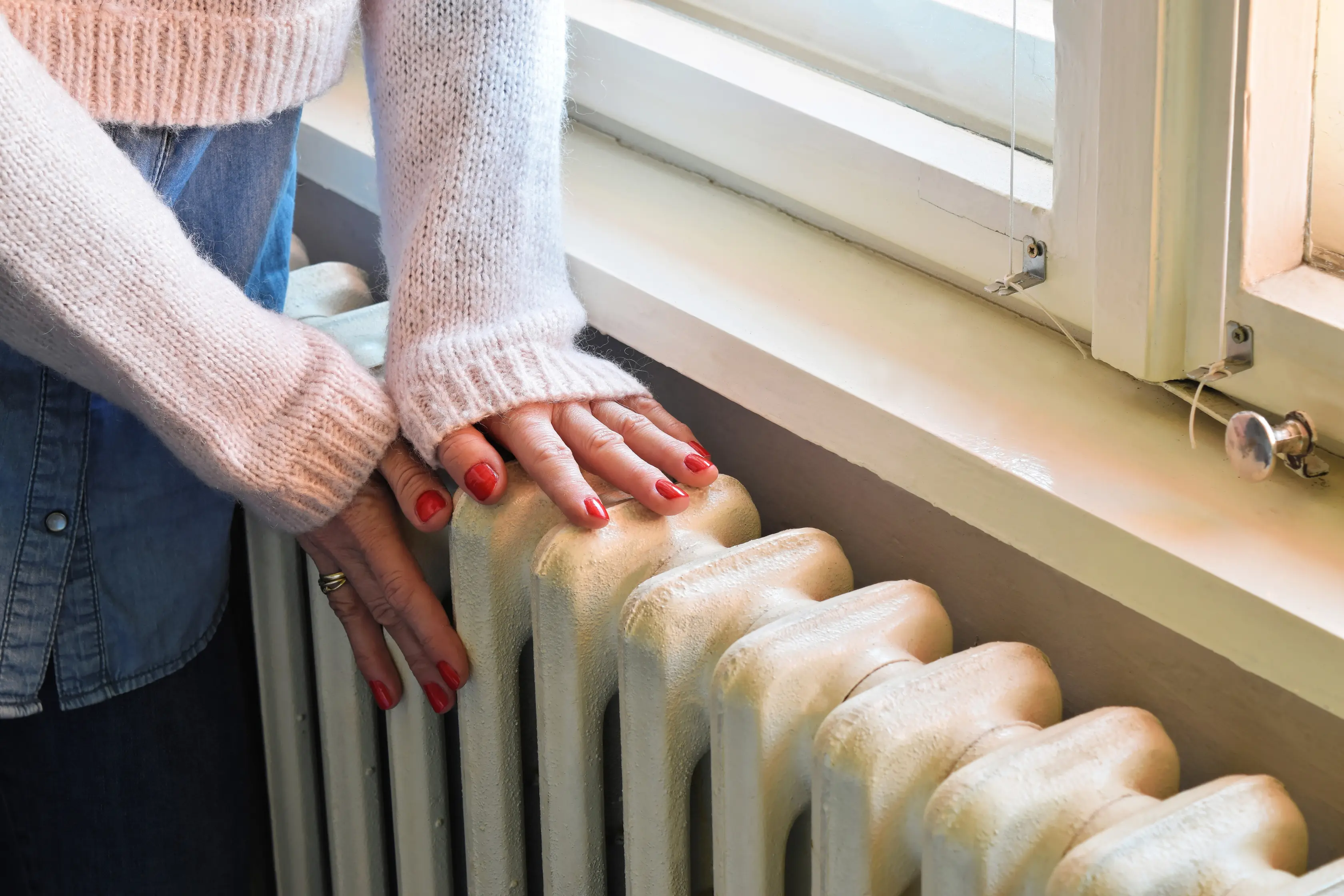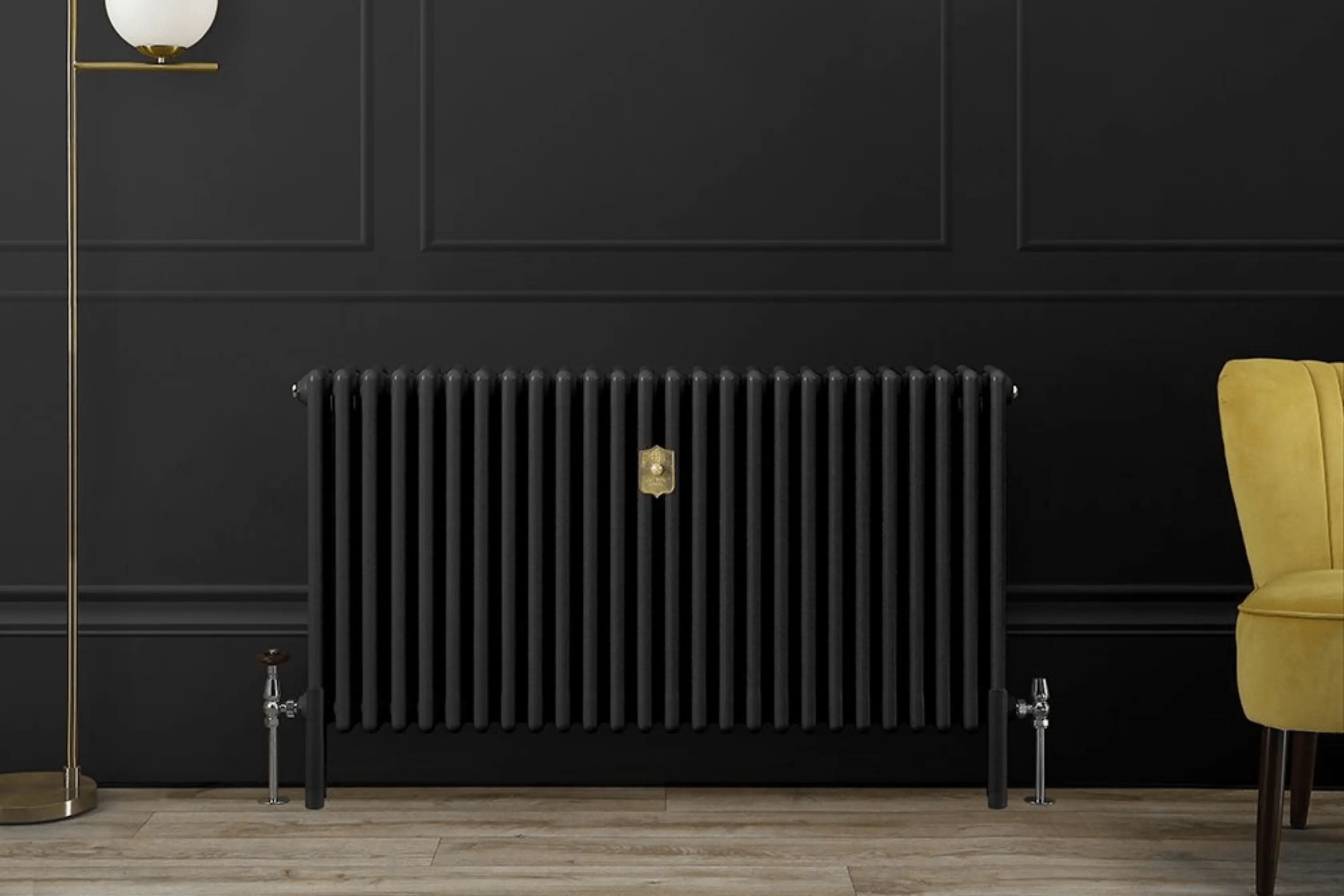Are you in the market for a traditional-style column radiator and want to know everything about them before you buy?
If so, you’ve come to the right place, welcome to Bathroom Takeaway’s definitive guide to buying column radiators.
BTU (and radiator size)
The first thing to think about when buying a column radiator is BTU.
BTU stands for British Thermal Unit and essentially this is a calculation of a radiator’s heat output.
What size column radiator do I need? Well what you need to work out is how many BTUs you need for each room in your house. Here at BT, we have a handy BTU calculator online that will allow you to do exactly that.
Head over to our BTU calculator and input your room dimensions and also whether you have single or double glazed windows. Once you’ve done that, the BTU calculator will give you a BTU rating for your room.
You then use this BTU rating to start deciding what size of radiator or radiators you need for that particular room. When shopping for column radiators (or any radiator for that matter) each individual product has a BTU rating. Generally, the bigger the size of a radiator, the bigger the BTU rating.
All you need to do now is choose one or more radiators that equals the BTU rating of your room.
If you get the BTU rating correct for each room in your home, then you can look forward to tasty warm rooms, and radiators that heat up at maximum efficiency.
What Are Column Radiators?
Column radiators are those traditionally-inspired roll top radiators that adorned the walls of UK homes in the 19th and early 20th century.
Crafted from mild steel, a column radiator is made up of vertical columns that are connected by a collector bar, top and bottom.
How do column radiators work?
Column radiators are designed to quickly and efficiently heat up a room.
They work by being filled up with hot water. The hot water heats up the steel columns of the radiator and those columns emit thermal radiation which in turn heats up the surrounding space and room.
Column radiators have valves at each end that allows hot water to enter and exit the radiator. Some column radiators have an integrated flow diverter that sits a short way into the bottom collector bar of the radiator. The flow diverter forces hot water to rise up to the top of the radiator which allows the whole of the radiator to heat up, which makes it more efficient.
What are the best column radiators?
In short, there is no ‘best’ column radiator.
The best column radiator for you is a design that is:
- The right size
- The right number of columns (2, 3 or 4 typically)
- Has the correct BTU rating (for your room)
- Is exactly the right colour
How many radiator columns do I need?
As well as the size of your column radiator, you need to also consider how many columns it has.
By this, we mean how many columns deep the radiator is.
Column radiators typically come in 3 different column depths: double column, triple column, or quadruple column.
The more columns a radiator has, the bigger the BTU heat output.
Horizontal or vertical
Once you've decided on a column radiator size and chosen how many columns you would like, the next thing to think about is whether you want a horizontal or vertical radiator.
The most common choice is a horizontal column radiator. If you grew up in the UK, then you most likely have lived in a home with horizontal radiators, and easily understand the advantages of this radiator orientation.
The other option is a vertical radiator. Vertical column radiators have exactly the same BTU rating as their horizontal counterparts, however vertical rads save space.
A vertical column radiator will take up less footprint in your room which in turn saves space.

Radiator colour
Now for the fun part, deciding your radiator colour.
The most common column radiator colours are white, black and anthracite. All three of these colours are neutral tones so they can work in virtually any room.
That said though, did you know that you can now buy these radiators in a huge array of imaginative colours?
Colour painted radiators come in some really exciting colourways; like Barbie pink, sunshine bright yellow, sassy purple, and sophisticated navy blue.
In addition to the coloured rads, you can now also buy column radiators in ‘hammered’ colours too. A hammered column radiator has been finished in such a way that it looks like it has been hammered into shape.
The hammered colours are designed to evoke an old style of radiator, these hammered radiators work really well if you’re installing radiators in an older property or when creating a period look.
Column radiator accessories
When planning a column radiator purchase, it’s important to take some time to consider the accessories you pair with your new radiator.
The best place to start with accessories is the radiator valves.
Now, you could use standard valves with a column radiator however you’d be missing a trick if you did.The best radiator valves for a column radiator are traditional-style valves. There are 3 main options when it comes to traditional radiator valves:
- Cross head radiator valves
- Wooden circular head radiator valves
- Ornate antique radiator valves
Either of the above three options look amazing when added to a column radiator. What’s great too is that all three options are available to buy in differing colours and finishes.

The next thing to think about are the pipes and collars. The pipes connect your radiator valves to your water supply and the collars attached at the end of the pipes (where they go into the floor or wall).
Solid radiator pipes and collars provide a really nice finishing touch to your column radiator, and they too are available to buy in different colours and finishes.
The final thing to plan when considering your column radiator is radiator feet (or mounting legs to give them their official title).
Column radiator feet are specifically designed to fit a column radiator.
If you are buying a particularly large column radiator then we recommend also buying radiator feet because they will help to support the weight of the rad. Similarly, if you are installing your column radiator on a stud-partition wall then we also recommend getting feet.
Column radiator feet are generally used for helping to support a column radiator’s weight however some customers include them purely for aesthetic reasons. If you like the idea of feet for your column radiator then just go for it!
FAQs
How to fit a column radiator?
Column radiators are fitted by being hung to the wall. Specially designed hanging brackets (included with a column radiator purchase) are used to hang a column radiator to the wall.
For larger column radiators, you have the option of installing additional column radiator feet (to help support the weight of the radiator). Column radiator feet are also specially designed to exactly fit a column radiator.
How to clean column radiators?
Once installed, a column radiator requires almost no maintenance to keep it looking its best.
That said though, over time, a column radiator can become a touch dusty. As well as attracting a bit of dust, a column radiator can pick up accidental splashes or scuff marks from people walking past.
The best way to remove dust or surface marks from your column radiator is to use a clean, damp microfiber cloth. Start by wiping the surface of your radiator at the top and work your way down to the bottom.
Another way to remove dust is to use your vacuum cleaner with one of the attachments that allows you to get into tight spaces. If you want to remove dust from the rear of your radiator then you can buy a specialist
radiator brush. A radiator brush is a long, thin microfibre brush that can be easily slid down the back of your radiator.






















